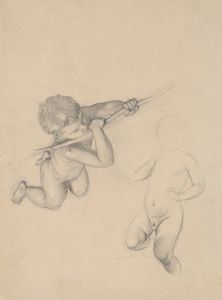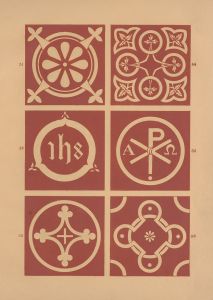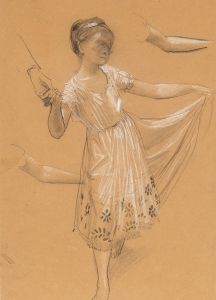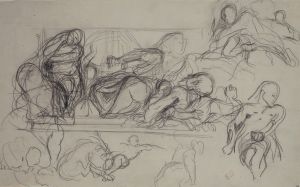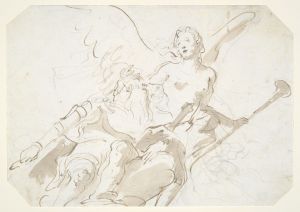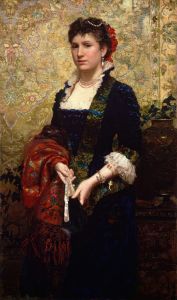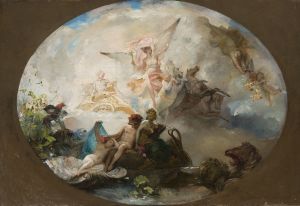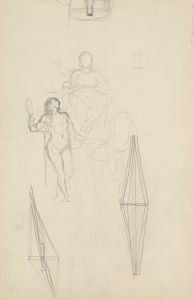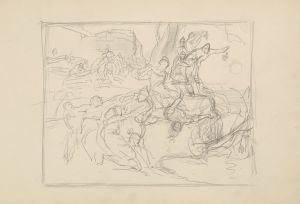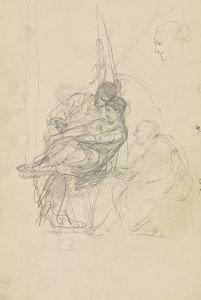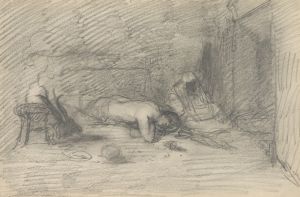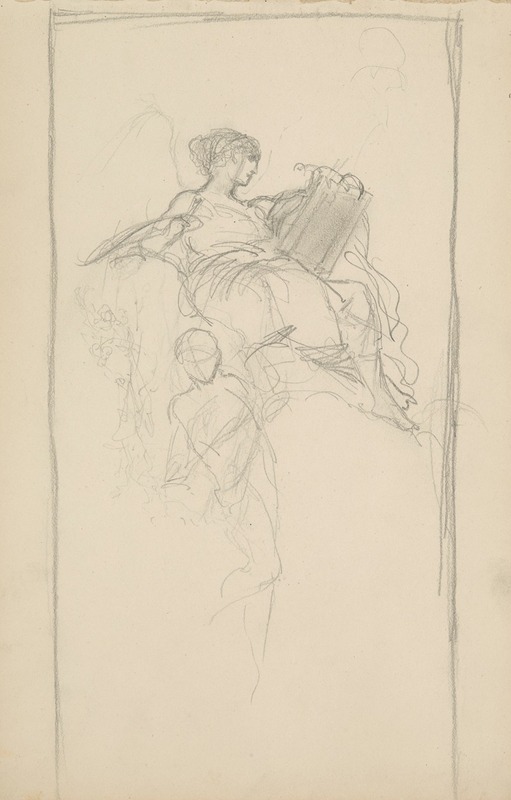
szkic postaci do plafonu ‘Światło i cień’ w pałacu Jana Zawiszy w Warszawie
A hand-painted replica of Henryk Siemiradzki’s masterpiece szkic postaci do plafonu ‘Światło i cień’ w pałacu Jana Zawiszy w Warszawie, meticulously crafted by professional artists to capture the true essence of the original. Each piece is created with museum-quality canvas and rare mineral pigments, carefully painted by experienced artists with delicate brushstrokes and rich, layered colors to perfectly recreate the texture of the original artwork. Unlike machine-printed reproductions, this hand-painted version brings the painting to life, infused with the artist’s emotions and skill in every stroke. Whether for personal collection or home decoration, it instantly elevates the artistic atmosphere of any space.
Henryk Siemiradzki was a renowned Polish painter of the 19th century, celebrated for his large-scale historical and mythological scenes. One of his lesser-known works is the preparatory sketch for the ceiling painting titled "Światło i cień" ("Light and Shadow") in the palace of Jan Zawisza in Warsaw. This work exemplifies Siemiradzki's mastery in handling complex compositions and his ability to convey intricate narratives through art.
Siemiradzki was born in 1843 in the Kharkov Governorate of the Russian Empire, which is now part of Ukraine. He studied at the Imperial Academy of Arts in Saint Petersburg and later honed his skills in Munich and Rome, where he was influenced by the classical traditions and the vibrant artistic communities. His works often reflect a blend of academic precision and romantic imagination, characteristics that are evident in the "Światło i cień" sketch.
The "Światło i cień" sketch was created as a preparatory work for a ceiling painting in the Warsaw palace of Jan Zawisza, a notable figure of the time. The palace itself was a hub of cultural and social gatherings, and commissioning a work from Siemiradzki would have been a testament to Zawisza's appreciation for fine art and his desire to adorn his residence with works of significant aesthetic and intellectual value.
In this sketch, Siemiradzki explores the interplay of light and shadow, a theme that is both literal and metaphorical. The composition likely features allegorical figures, a common motif in Siemiradzki's oeuvre, where personifications of abstract concepts are depicted in dynamic poses and intricate drapery. The use of chiaroscuro, a technique that contrasts light and dark, would have been employed to enhance the three-dimensionality of the figures and to create a sense of depth and movement within the confined space of a ceiling.
Siemiradzki's ability to render the human form with anatomical accuracy and emotional expressiveness is evident in this work. His figures are often idealized, drawing inspiration from classical sculpture and Renaissance painting, yet they are imbued with a sense of vitality and narrative purpose. This approach not only showcases his technical prowess but also his understanding of the symbolic potential of art.
The "Światło i cień" sketch, like many of Siemiradzki's works, reflects the cultural milieu of the time, where art was seen as a means of both decoration and intellectual engagement. While the final ceiling painting's current status and location are not widely documented, the sketch remains a testament to Siemiradzki's artistic vision and his contribution to the cultural heritage of Poland.
Overall, Henryk Siemiradzki's "Światło i cień" sketch for the Jan Zawisza palace ceiling is a remarkable example of 19th-century Polish art, highlighting the artist's skill in composition, his thematic depth, and his role in the broader European art scene of his time.





